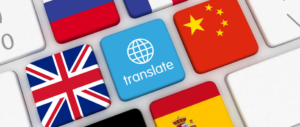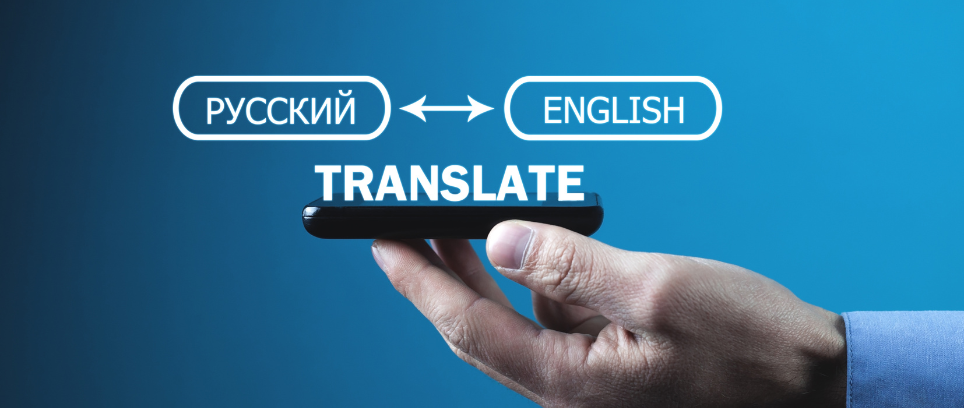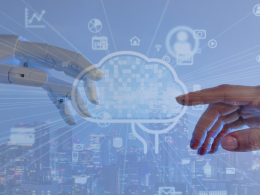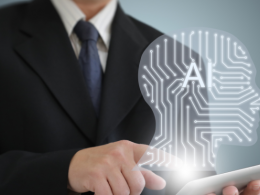Have you ever wondered about the magic behind instantly understanding someone speaking a language you don’t know?
Or how businesses effortlessly reach global audiences without hiring armies of human translators?
In our increasingly interconnected world, where languages and cultures converge, AI-powered translation is like a modern-day Babel fish, breaking down language barriers with astonishing precision.
But how does it work?
Think of it as a voracious language student, fueled by massive multilingual datasets. It trains neural networks, akin to the human brain, to master the art of translation.
The best part?
It never stops learning, continuously refining its understanding of language nuances and context through deep learning.
In this blog, we’ll unravel the mysteries of AI-powered translation, exploring its lightning speed, cost-efficiency, unwavering accuracy, and scalability, all while navigating the challenges and ethical considerations that accompany this transformative technology.
So, let’s embark on this thrilling journey to discover how AI is reshaping global communication.

How AI-Powered Translation Works?
Let’s delve deeper into how AI-powered translation works, from data collection to continuous learning:
1. Data Collection
AI-powered translation begins with the collection of extensive datasets containing multilingual text and audio content. These datasets serve as the foundational building blocks for training AI models.
Here’s how data collection works:
- Multilingual Sources: Data is sourced from a wide range of multilingual materials, including books, websites, audio recordings, and more. The diversity of sources helps the AI model grasp different language patterns and nuances.
- Parallel Texts: Parallel texts, which include the same content translated into multiple languages, are particularly valuable. These enable the AI model to learn how words and phrases align across languages.
- Quality Control: Data quality is crucial. Clean, well-annotated data is essential for training accurate and reliable translation models. Human reviewers may be involved to ensure the accuracy of the dataset.
- Continuous Updates: The dataset is not a static entity. It’s continuously updated to keep pace with evolving languages, new terminology, and changes in linguistic trends.
2. Training Neural Networks
Once the data is collected, neural networks, inspired by the human brain’s structure, are employed to build translation models.
This phase involves several key steps:
- Data Preprocessing: The collected data is preprocessed to clean and format it for training. This includes tokenization (breaking text into words or subwords), handling punctuation, and aligning parallel texts.
- Neural Architecture: Modern translation models often use recurrent neural networks (RNNs), convolutional neural networks (CNNs), or more advanced models like transformers. These networks are designed to understand and represent the relationships between words and phrases in different languages.
- Loss Function: A loss function is defined to measure the difference between the AI’s predictions and the actual translations in the training data. The model aims to minimize this loss during training.
- Backpropagation: The model learns by adjusting its internal parameters through backpropagation, a process that involves calculating gradients and updating weights to minimize the loss.
- Training Iterations: The model goes through multiple training iterations, adjusting its parameters to improve its translation accuracy. This process can take considerable computational resources and time.
3. Continuous Learning
AI-powered translation models don’t stop learning after the initial training phase. They continue to improve through a process known as “deep learning.”
Here’s how continuous learning works:
- Additional Data: As more multilingual content becomes available, it’s added to the training dataset. This additional data helps the model refine its understanding of language nuances, idioms, and context.
- Fine-tuning: The model may undergo periodic fine-tuning to adapt to changing linguistic patterns and emerging terminology. Fine-tuning can help maintain or improve translation quality over time.
- User Feedback: Some AI translation systems incorporate user feedback. Corrections and suggestions from users can be used to train the model further and address specific translation challenges.
- Iterative Improvement: Continuous learning is an iterative process. The more data the model processes and the more feedback it receives, the better it becomes at providing accurate translations.

Benefits of AI-Powered Translation Services
Let’s delve deeper into the advantages of AI-powered translation services in terms of speed, cost-efficiency, accuracy, scalability, consistency, and multimodal capabilities:
1. Speed
AI-powered translation services excel at providing rapid translations, offering significant benefits in multilingual environments.
- Real-Time Communication: In today’s fast-paced world, instant translations are essential for efficient communication, whether in business negotiations, customer support, or global collaboration.
- Reduced Time Delays: AI can instantly translate spoken or written content, eliminating the need for delays associated with waiting for human translators to complete their work. This is particularly valuable in time-sensitive situations.
2. Cost-Efficiency
AI translation solutions offer a cost-effective alternative to traditional human translation services:
- Lower Labor Costs: Traditional translation services often involve substantial labor costs associated with hiring professional translators. AI reduces these costs significantly.
- No Overtime or Weekend Charges: AI is available 24/7 without the need for overtime or weekend rates. This is advantageous for businesses that operate across different time zones.
- Eliminating Overhead: Businesses can avoid overhead costs such as office space, equipment, and employee benefits, as AI translation services are typically cloud-based.
3. Accuracy
AI models are engineered to produce highly accurate translations, making them a reliable choice for various languages and dialects.
- Consistency: AI models consistently deliver translations that adhere to defined rules and language patterns. This ensures that the quality of translations remains high, regardless of the volume of content.
- Language Pairs: AI-powered translation services can handle a vast array of language pairs, including less common languages, dialects, and regional variations, ensuring accuracy in diverse linguistic contexts.
4. Scalability
AI-powered translation services can effortlessly adapt to increasing demands:
- Rapid Growth: As businesses expand into new markets or experience growth, AI can scale to meet the rising translation needs without the complexities associated with hiring and training additional human translators.
- Seasonal Demands: For industries with seasonal translation requirements, AI provides the flexibility to scale up or down as needed without the commitment of full-time employees.
5. Consistency
AI ensures consistent translations across all content:
- Brand Consistency: Businesses can maintain consistent branding and messaging across languages and markets, which is essential for building a cohesive global image.
- Eliminating Human Errors: AI translations are not subject to human error, ensuring that content retains its intended meaning and quality.
6. Multimodal Capabilities
AI-powered translation services extend beyond text, offering versatility across various communication mediums:
- Speech Translation: AI can translate spoken language in real-time, enabling face-to-face or telephonic conversations between individuals who speak different languages.
- Visual Content: Some AI models can also translate visual content, such as text within images or videos, making it accessible to a wider audience.
- Text Messaging and Chat: AI is commonly used in chat applications to provide instant text translations, facilitating global online conversations.

Revolutionizing Global Communication
Let’s elaborate on how AI-powered translation services have the potential to revolutionize global communication in various ways:
1. Breaking Down Language Barriers
Language barriers have long been a hindrance to effective communication in a globalized world. AI-powered translation services offer a solution by:
- Facilitating Multilingual Conversations: These services enable individuals who speak different languages to have meaningful conversations without the need for a common language. This opens up opportunities for cross-cultural exchanges, whether in business, education, or personal interactions.
- Enhancing Inclusivity: AI translation promotes inclusivity by ensuring that language is no longer a barrier to accessing information or participating in various aspects of society. This is particularly beneficial for immigrants, travelers, and international students who may not be fluent in the local language.
- Empowering Multinational Communities: In multicultural and multilingual communities, AI translation can foster understanding and cooperation among diverse groups. It promotes social cohesion by allowing residents to communicate effectively, bridging linguistic divides.
2. Enhancing Cross-Cultural Collaboration
AI-powered translation services are a game-changer for businesses and organizations engaging in global collaboration.
- Seamless Communication: Businesses operating in multiple countries can communicate more efficiently with partners, clients, and employees, irrespective of language differences. This streamlines decision-making and project execution.
- Market Expansion: Access to accurate and efficient translation services empowers businesses to expand into new markets with confidence. It eliminates language as a barrier to entry and helps tailor products and services to local audiences.
- Cultural Sensitivity: AI translation can aid in cultural sensitivity training and cross-cultural negotiations. It ensures that communication is respectful and avoids misunderstandings that may harm relationships.
3. Improving Accessibility
AI translation services play a crucial role in making digital content accessible to a global audience:
- Education: Educational institutions can reach a wider, more diverse student base by offering course materials, lectures, and resources in multiple languages. This fosters international student mobility and knowledge sharing.
- Government Services: Governments can provide critical information, such as healthcare updates or emergency alerts, in multiple languages. This ensures that all residents, regardless of their language proficiency, have access to essential services.
- Business Websites and Apps: Companies can make their websites and mobile apps accessible to non-English-speaking users. This enhances user experience and expands the customer base.
4. Enabling Real-Time Communication
AI-powered translation services have the potential to transform real-time communication in various sectors:
- Travel and Tourism: Tourists and travelers can use AI translation apps to communicate with locals, navigate foreign cities, and immerse themselves in local culture. This enhances the travel experience and fosters cross-cultural understanding.
- Hospitality Industry: Hotels and restaurants can provide multilingual services, creating a welcoming environment for international guests. This can lead to increased bookings and positive reviews.
- Customer Service: AI-driven chatbots and virtual assistants can provide customer support in multiple languages, enhancing the customer experience for a global clientele.
Challenges and Considerations
Let’s dive deeper into the challenges and considerations associated with AI-powered translation services:

1. Accuracy and Context
AI models, although advanced, are not flawless when it comes to translation accuracy. They might face difficulties in the following areas:
- Context-Specific Translation: AI may struggle to capture the nuances of context in certain situations. Language often relies heavily on context, and AI may misinterpret the intended meaning when it lacks sufficient contextual information.
- Highly Technical or Specialized Content: AI models may not excel in translating highly technical, scientific, or specialized content accurately. These domains often use jargon and terminology that may not be well represented in the training data.
- Idiomatic Expressions and Cultural Nuances: Translating idiomatic expressions, humor, or culturally specific references can be challenging for AI. It might provide literal translations that don’t convey the intended humor or cultural context.
2. Privacy and Security
- Data Privacy: AI-powered translation services often involve transmitting data over the internet. Storing or processing sensitive information, such as legal documents, medical records, or confidential business communications, through these services can pose data privacy risks. Users need to be cautious about sharing sensitive content.
- Data Breaches: There’s always a risk of data breaches or leaks when using online translation services. The data you input into these platforms may be stored, and if not adequately protected, it could be vulnerable to unauthorized access or hacking.
- Regulatory Compliance: Compliance with data protection regulations, such as GDPR in Europe or HIPAA in the United States, becomes crucial when using AI translation services for sensitive content. Users and organizations must ensure that their chosen service providers adhere to these regulations.
3. Ethical Considerations
- Cultural Sensitivity: AI may inadvertently perpetuate stereotypes or cultural biases in translations. The algorithms used in these services are trained on vast datasets, which may include biased or unbalanced content. This can lead to translations that unintentionally offend or misrepresent certain cultures or groups.
- Impact on Human Translators: The increasing use of AI for translation has raised concerns about its impact on professional human translators. Some worry that the widespread adoption of AI may reduce job opportunities for human translators, leading to job displacement in certain industries.
- Ownership and Control: Ethical questions also arise regarding data ownership and control. When individuals or organizations use AI translation services, they may unknowingly give up some control over their content, potentially leading to issues of intellectual property or content ownership.
AI-powered translation services have the potential to revolutionize global communication by breaking down language barriers, enhancing cross-cultural collaboration, and improving accessibility. While they are not without challenges, the benefits they offer in terms of speed,cost-efficiency, and accuracy cannot be ignored.
As technology continues to advance, AI-powered translation services are poised to play a pivotal role in shaping the way we communicate on a global scale. Embracing this technology can lead to a more interconnected and inclusive world where language is no longer a barrier to understanding and collaboration.
 Pin
PinReady to dive deeper into the world of Data Science and AI?
Join Accredian’s Executive Program in Data Science & AI and shape the future of your career. Your transformative learning experience awaits!






